Numismatics Values: Scarcity Key Factor in Coin Prices
Wondering how to determine the worth of your coins? Understanding numismatics values is crucial. This guide explores rarity, minting details, and coin grading—key factors affecting value. Dive in to learn precisely how to evaluate your collection. Key Takeaways Numismatic value...
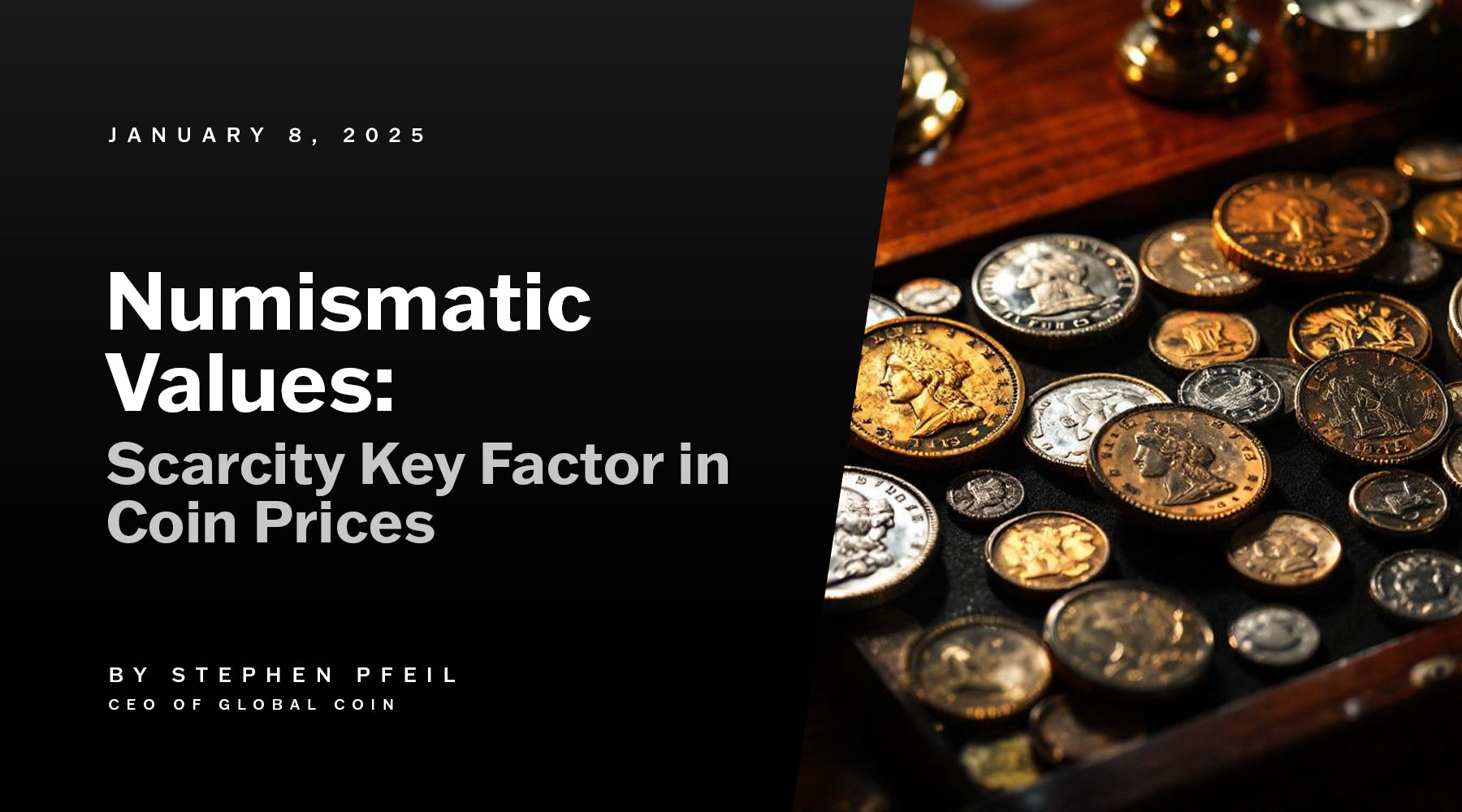
Wondering how to determine the worth of your coins? Understanding numismatics values is crucial. This guide explores rarity, minting details, and coin grading—key factors affecting value. Dive in to learn precisely how to evaluate your collection.
Key Takeaways
-
Numismatic value is determined by factors such as rarity, demand, mintage numbers, and special designations, which significantly influence a coin's worth.
-
Coin grading plays a vital role in establishing value, with higher-graded coins typically commanding better market prices and providing assurance of quality and authenticity.
-
Utilizing trusted sources like the U.S. Mint and the PCGS Price Guide is essential for collectors to accurately assess coin values and make informed buying or selling decisions.
Numismatics Values Guide: How to Determine Coin Worth
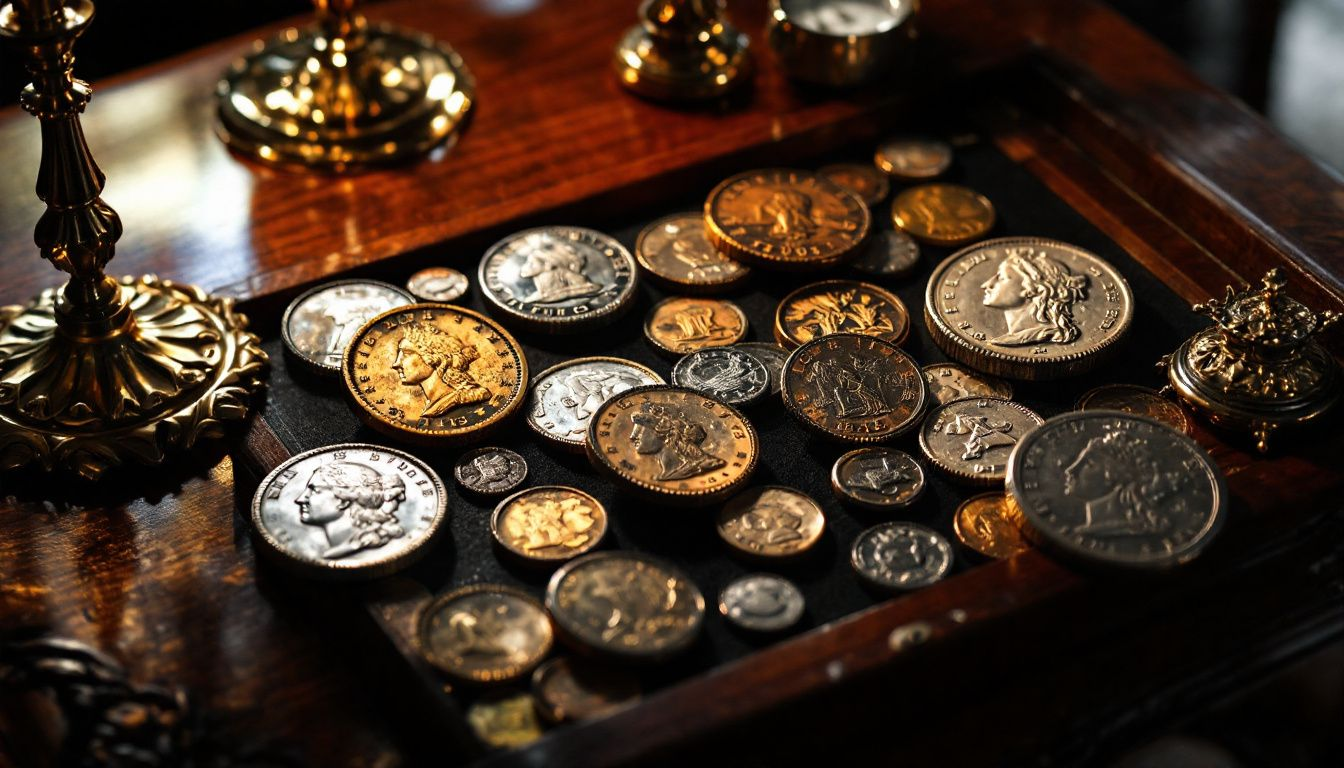
Numismatic value, a term that resonates deeply within the coin-collecting community, refers to the worth of a collectible coin beyond its face value. This value is influenced by a myriad of factors, with rarity and demand being among the most significant. Rare coins, often characterized by low mintage numbers, can fetch surprisingly high prices in the numismatic market.
Grasping the nuances that affect coin values is essential for collectors. Factors such as mintage, and variations within a coin’s production year can significantly impact its worth. For instance, a coin minted in limited quantities or with unique variations tends to be more sought after, driving its value higher. The reason a coin's value may be higher is often linked to factors such as mintage, rarity, and demand, rather than just age. Popularity and demand, which can fluctuate based on collector trends and economic factors, also play a pivotal role.
The numismatic market is dynamic, with coin values often shifting due to these factors. Whether you’re a seasoned collector or a novice enthusiast, recognizing the elements that determine coin worth can enhance your collection’s value and provide deeper insights into the fascinating world of numismatics. In some cases, two coins from the same year can have very different values due to differences in mintage or condition.
Introduction
Numismatics, derived from Latin and French words related to coins, embodies both scholarly study and passionate collecting. This field not only involves appraising and collecting rare coins but also delving into the historical and cultural significance embedded in each piece, including numismatic coins. The American Numismatic Society and other notable organizations have long supported this fascinating pursuit, contributing to its growth and appreciation worldwide.
From ancient times, when coin collecting was a noble pastime, to its current status as a popular global hobby, numismatics has evolved significantly. Today, collectors from all walks of life engage in this enriching activity, drawn by the allure of history, the thrill of discovery, and the potential financial rewards. Collectors who comprehend coin valuation principles can better appreciate and enhance their collections.
Introduction to Numismatics
Numismatics is the fascinating study and collection of coins, with a special focus on numismatic coins and rare coins that hold value far beyond their face value. At its core, numismatics is about understanding the history, rarity, and condition of coins to accurately determine their numismatic value. Coin collecting has become a popular hobby and investment strategy, attracting collectors and investors who seek to build collections that appreciate in value over time.
The numismatic value of a coin is shaped by several key factors. Scarcity is a major driver—coins with a limited mintage are often more desirable, especially when paired with high demand among collectors. For example, a coin produced in small numbers and sought after by many will generally command a higher price than a coin with a large mintage and less interest. Quality and condition also play a crucial role, as coins in better condition are typically valued more highly.
Collectors rely on trusted resources like the NGC Price Guide and PCGS Price Guide to determine accurate coin values. These guides provide up-to-date market data, helping collectors and investors make informed decisions about buying, selling, or holding coins in their collection. By understanding the factors that influence numismatic value—such as rarity, demand, and quality—collectors can better appreciate the worth of their coins and make strategic choices in the world of numismatics.
Understanding Numismatic Value
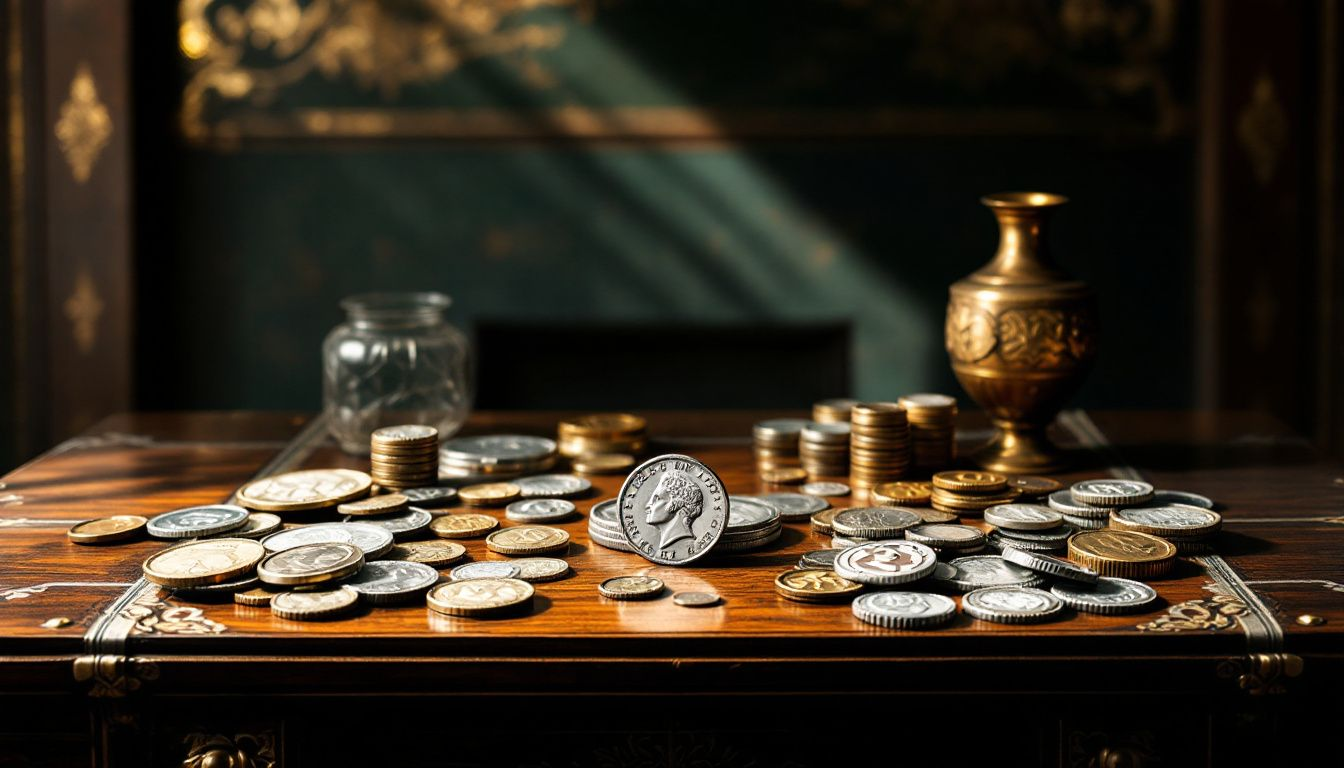
Numismatic value extends beyond the face value of a coin, encompassing factors like rarity, demand, and special designations. Recognizing these elements is vital for collectors to assess a coin’s true worth. Another critical factor is a coin's condition, as coins in better condition are generally more valuable and are assessed using standardized grading scales. While age can be a factor, it is often the mintage number and specific variations within a coin’s production that hold greater significance.
Consider, for example, a coin with a low mintage number or unique mint mark. Such coins are typically more desirable due to their scarcity, leading to higher values in the market. Additionally, the popularity of certain coins can fluctuate, driven by collector interest and economic factors. Coins that are in high demand can see significant price increases over time.
Special designations, such as mint state classifications or notable strike conditions, can also enhance a coin’s value. Understanding these nuances allows collectors to make informed decisions, ensuring they recognize the true numismatic value of their coins.
The Importance of Coin Grading
The condition of a coin, often referred to as its grade, is a crucial determinant of its value. Coins with minimal wear and higher grades are generally more valuable, with grading systems ranging from Poor to MS 70. Professional grading services, like those offered by PCGS, provide a standardized reference that assures buyers of a coin's quality and authenticity.
Graded coins typically command higher market prices compared to their ungraded counterparts. This is because professional grading services use advanced technology to detect counterfeits and assess a coin's condition accurately, protecting buyers from potential scams. The consistency and reliability of these standardized grading systems make it easier for buyers and sellers to agree on a coin's worth.
Coin collectors must understand the importance of grading. Not only does it enhance a coin's marketability, but it also provides a level of assurance and trust in the numismatic market. Having a coin professionally graded can significantly impact its perceived value, whether buying or selling.
Gold Coins and Their Numismatic Value

Gold coins, with their intrinsic value and historical significance, hold a special place in the numismatic world. The American Gold Eagle series, for instance, has been issued annually since 1986 and is highly prized by collectors. These coins contain 91.67% gold, with small amounts of silver and copper added for durability.
One of the key features that enhances the numismatic value of gold coins is their design and minting attributes. The American Gold Eagle series, for example, introduced a new reverse design in 2021, featuring a detailed profile of the Bald Eagle. Collectors often seek out specific attributes such as the date of minting, mintmark, and overall quality, which can significantly impact a coin’s value.
Proof versions of these coins, known for their exceptional finish and quality, are especially sought after. Additionally, special editions like proof and uncirculated types, which are more limited in production, tend to fetch higher prices in the market. These factors help collectors determine the true worth of their gold coins and make informed decisions in transactions. American Gold Eagle coins are also easily sold at precious metal dealers due to their recognized value and government backing.
Silver Coins: A Valuable Investment
Silver coins, such as the American Eagle silver coins, have long been valued for their investment potential and historical significance. First produced by the U.S. Mint in 1986, these coins have become iconic among collectors. Each American Silver Eagle contains one troy ounce of .999 fine silver, making its value closely tied to the current market price of silver.
These coins are not only collectible but also serve as a hedge against inflation and economic uncertainty. Their investment appeal is enhanced by their purity and the iconic design that represents liberty. Silver coins provide historical interest and financial security, making them valuable additions for both collectors and investors.
2024 Sales: Gold and Silver Flowing Hair Sale Prices
Scarcity has long been a cornerstone of value, particularly in the world of rare coins. These treasures combine exclusivity, historical significance, and tangible wealth, making them sought-after by both collectors and investors. The recent milestone sale of a 2024 Flowing Hair Silver Medal with an exclusive privy mark for over $20,000, highlights how the numismatic premium elevates these coins beyond their material worth.
This sale is part of a broader trend demonstrating how scarcity drives exceptional value. For instance, in a separate auction, privy-marked Flowing Hair Gold medal numbered 1 / 230 commemorating the 230th anniversary of U.S. coinage realized an astonishing $440,000 after fierce bidding. These examples illustrate how the numismatic premium transforms rare coins into unparalleled investments.
Collectors who sell rare coins at auction can often receive amounts that far exceed the coin's intrinsic metal value, thanks to numismatic premiums driven by rarity, condition, and market demand.
The 230th Anniversary Flowing Hair Silver Medal and the 230th-anniversary Flowing Hair gold coins share a key feature: limited mintage. Both items were released by the US Mint, ensuring authenticity and rarity. Coins with privy marks are particularly prized because of their uniqueness, making them highly desirable to collectors.
The competitive bidding that characterized both sales is a clear indicator of the market’s recognition of these coins’ value. Collectors understand that these assets are not only rare but also carry immense cultural and financial significance.
Why Scarcity Wins in the Rare Coin Market
-
Rare coins like these are examples of how scarcity drives value. Unlike commodities like gold bullion, which are priced based on their weight and purity, rare coins derive their worth from factors that are impossible to replicate:
-
Artistic and Historical Value: Rare coins blend the craftsmanship of fine art with the narrative of history, offering a unique investment experience.
-
Limited Availability: The more scarce the coin, the higher the demand. Privy-marked coins epitomize this principle, commanding exceptional premiums.
-
Market Resilience: Rare coins operate in a niche market, often appreciating independently of broader economic trends.
-
Trusted Sources for Coin Values
Relying on trusted sources is crucial when determining coin values. The U.S. Mint provides reliable information on the weight and purity of coins, serving as a trustworthy source for information. Additionally, the PCGS Price Guide offers average asking prices for coins graded by PCGS, compiled from dealer ads, auctions, and expert input.
NGC price guides are also widely used by collectors to determine average retail prices for NGC-certified coins, based on documented transactions and market trends.
The PCGS Price Guide is particularly valuable for evaluating significant U.S. rare coins, although prices may vary. For pcgs coins valued under $10, the guide reflects prices listed for non-graded coins due to the higher grading fees.
These trusted sources ensure collectors have accurate, reliable information for assessing coin values.
Key Factors Affecting Coin Prices
Several key factors influence coin prices, with rarity being one of the most significant. Fewer coins available on the market increase their desirability and price. Coins linked to important events or historical figures often see enhanced value due to their historical significance. For example, the 1943 copper penny and the 1916-D Mercury Dime are highly valuable due to their rarity and historical context.
Mintage numbers, design varieties, and errors also play a crucial role in determining a coin's worth. Coins with low mintage numbers or unique errors are typically more desirable. Mintmarks, indicating the production location, are another critical factor in assessing a coin's rarity and potential value.
The aesthetic eye appeal of a coin, along with collector demand at auctions, can further influence its market price. These factors help collectors navigate the complex numismatic market. Considering rarity, historical significance, and other key elements enables collectors to make informed decisions and maximize coin value.
Popular Collectible Coins

Certain coins have garnered significant popularity among collectors due to their historical context and design features. The Morgan Silver Dollar, designed by George T. Morgan, was last minted in 1921 and remains highly sought after. Similarly, the Franklin Half Dollar, produced from 1948 to 1963, honors Benjamin Franklin and is prized for its historical significance.
Other notable collectible coins include the Lincoln Pennies and the Peace Dollar. The 1909-S VDB Lincoln Penny is particularly sought after, while the Peace Dollar, introduced in 1921 to commemorate the end of World War I, holds a special place in numismatic history.
These mint coins, with their rich historical backgrounds and unique designs, continue to captivate collectors and enhance their collections.
Coin Collecting Strategies
Successful coin collecting goes beyond simply acquiring coins—it involves understanding the factors that influence coin values and using that knowledge to build a valuable collection of numismatic coins. One effective strategy is to focus on rare coins with a limited mintage, such as the Peace Dollar or the Half Dollar, which are highly prized for their scarcity and historical significance. Collectors may also target coins with consistently high demand, like gold coins and silver coins, as these tend to hold or increase their market value over time.
Another important aspect of coin collecting is using reliable coin price guides, such as the NGC Price Guide, to determine the current market value of coins. These guides help collectors assess the worth of their coins based on factors like mintage number, grade, and rarity. By staying informed about market trends and using these resources, collectors can make smarter decisions when buying or selling coins.
Security is also a key consideration for any collection. Storing coins in a safe, secure location or using a trusted online platform can help protect valuable assets from theft or damage. Additionally, learning about the history and unique characteristics of each coin allows collectors to understand the reasons behind a coin’s value, making it easier to spot valuable opportunities and avoid common pitfalls.
By combining knowledge of numismatic factors, utilizing trusted guides, and implementing effective security measures, collectors can build a collection that not only holds its value but also offers long-term appreciation. Understanding the market, the rarity of coins, and the factors that drive demand ensures that every addition to a collection is a strategic one.
Using a Coin Price Guide
Thanks to online auction results, coin price guides now offer more accurate and comprehensive information. These guides are instrumental in helping collectors understand the market value of their coins. Having coins graded enhances their marketability, making it easier for collectors and investors to buy and sell.
Researching reputable auction houses specializing in numismatics is crucial when selling coins at auction. High-quality photos and clear descriptions of coins are essential for attracting bidders and achieving better outcomes.
Utilizing a coin price guide effectively can significantly influence the sale price and ensure collectors get the best value for their coins.
Maximizing Your Collection's Value
To maximize the value of your coin collection, certain practices are essential. Graded coins often hold their value better over time, providing a stable investment during economic fluctuations. Proper storage methods, such as using protective cases and climate-controlled environments, help maintain the condition of your coins, preserving their value over the long term.
Using a reputable site for buying, selling, or storing coins can provide additional security and access to valuable resources for collectors.
Insuring your collection is another critical step in safeguarding against potential losses due to theft or damage. These measures ensure collectors’ investments are protected and continue to grow in value.
Summary
Throughout this guide, we've explored the multifaceted world of numismatics and the various factors that influence coin values. From understanding numismatic value and the importance of coin grading to recognizing the appeal of gold and silver coins, each aspect plays a crucial role in determining a coin's worth. Trusted sources and key factors affecting prices have also been discussed, providing a comprehensive overview for collectors.
As you delve deeper into coin collecting, applying this knowledge will enhance your enjoyment and the financial value of your collection. Embrace the journey, and let each coin tell its story, enriching your numismatic experience.
Global Coin’s Role in the Numismatic Market
Global Coin's milestone sale of the 2024 Flowing Hair Silver Medal is a testament to the company's expertise in sourcing and curating exceptional pieces. By offering coins with unique attributes like privy marks, Global Coin connects investors and collectors with assets that combine tangible wealth and irreplaceable historical significance.
This expertise extends beyond individual sales. As the the Flowing Hair gold medal auction result shows, the market for rare coins is thriving. Global Coin is at the forefront, leveraging its industry relationships to provide access to treasures that are as exclusive as they are valuable.
Frequently Asked Questions
What is numismatic value?
Numismatic value is the worth of a collectible coin that exceeds its face value, determined by factors like rarity, demand, and historical significance. Understanding these aspects is essential for collectors looking to gauge the true value of their coins.
Why is coin grading important?
Coin grading is essential as it establishes a coin's condition and directly influences its market value. Coins graded by reputable organizations tend to achieve higher prices due to the assurance of quality and authenticity.
How do I determine the value of my gold coins?
To determine the value of your gold coins, assess their gold content, historical significance, rarity, and specific attributes such as the date of minting and mintmark. These factors will provide a comprehensive understanding of their worth.
Which sources are reliable for coin valuations?
Reliable sources for coin valuations include the U.S. Mint and the PCGS Price Guide, which aggregates data from dealer advertisements, auctions, and expert insights to offer accurate pricing information. Utilizing these resources will ensure you obtain trustworthy valuations.
How can I maximize the value of my coin collection?
To maximize the value of your coin collection, ensure your coins are properly graded and stored in protective cases, and consider insuring them. Additionally, utilizing reputable auction houses and providing high-quality photographs will enhance your selling potential.
Related Articles
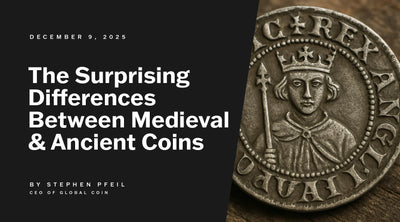
The Surprising Differences Between Medieval and Ancient Coins
Hi, I’m Stephen Pfeil, founder of Global Coin. For more than 25 years, I’ve handled tens of thous...
Discover More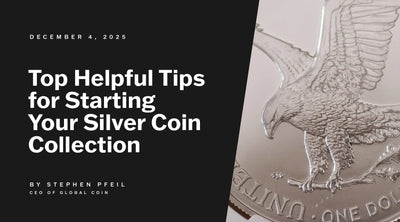
Top Helpful Tips for Starting Your Silver Coin Collection
Let me walk you through how I started my silver coin collection—and how you can too, with clarit...
Discover More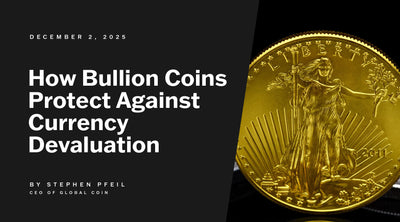
How Bullion Coins Protect Against Currency Devaluation
Hello, I'm Stephen, founder of Global Coin, where we specialize in post-1986 rare coins and prec...
Discover More

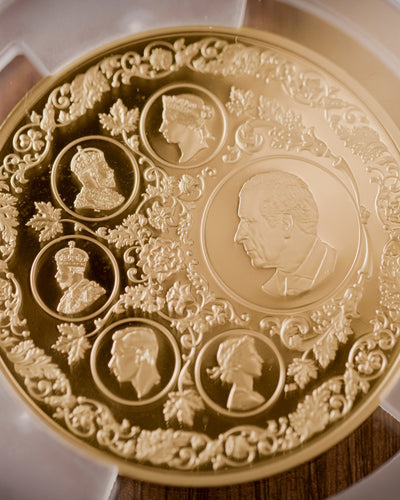
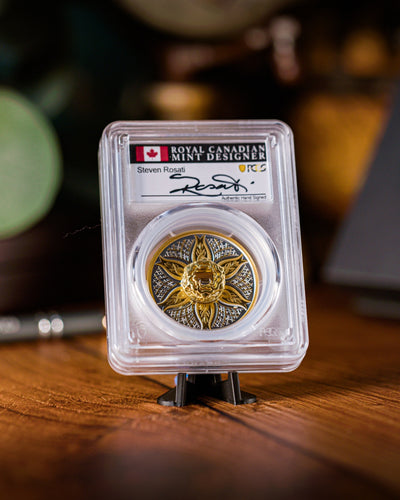
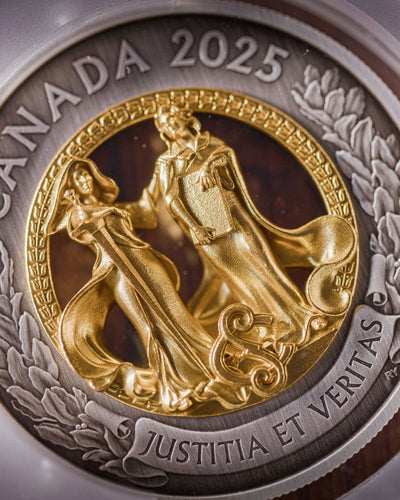
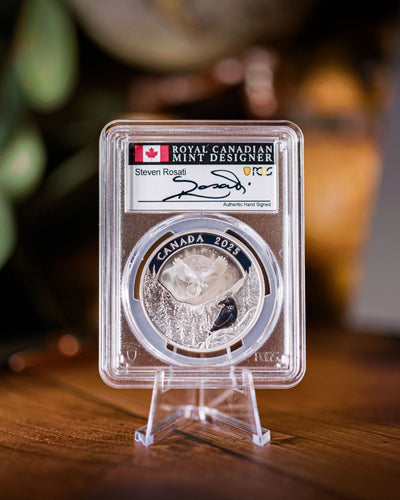
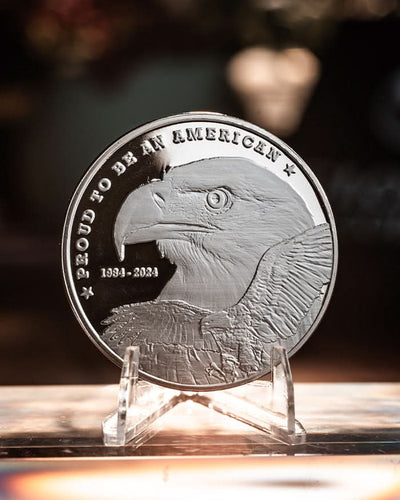
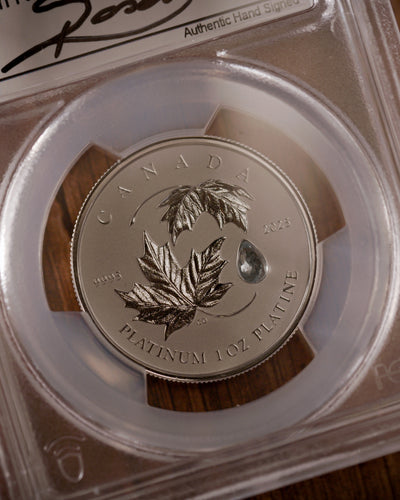
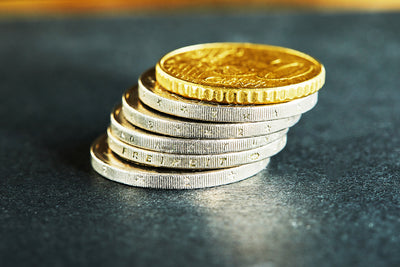
Leave a comment
This site is protected by hCaptcha and the hCaptcha Privacy Policy and Terms of Service apply.